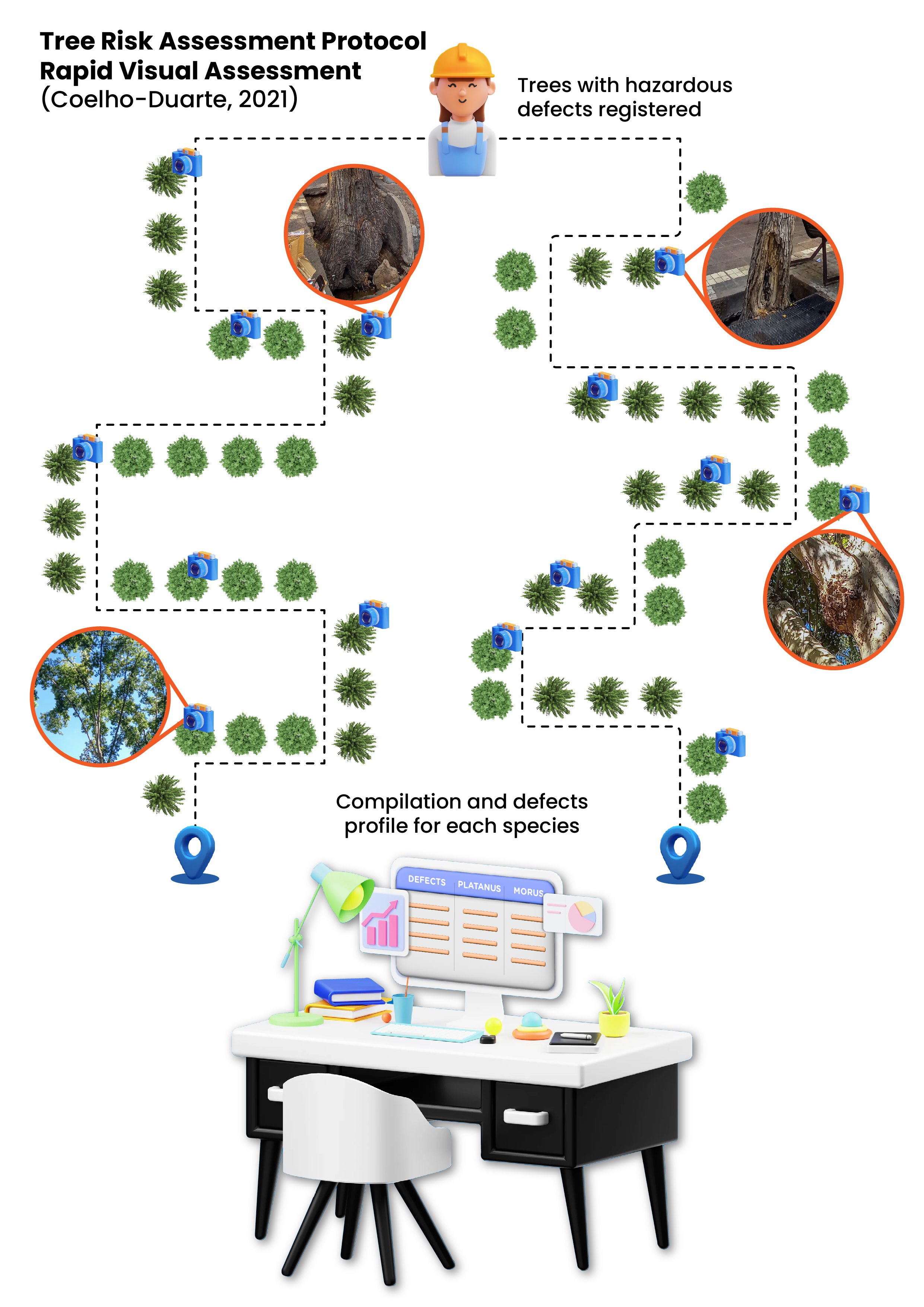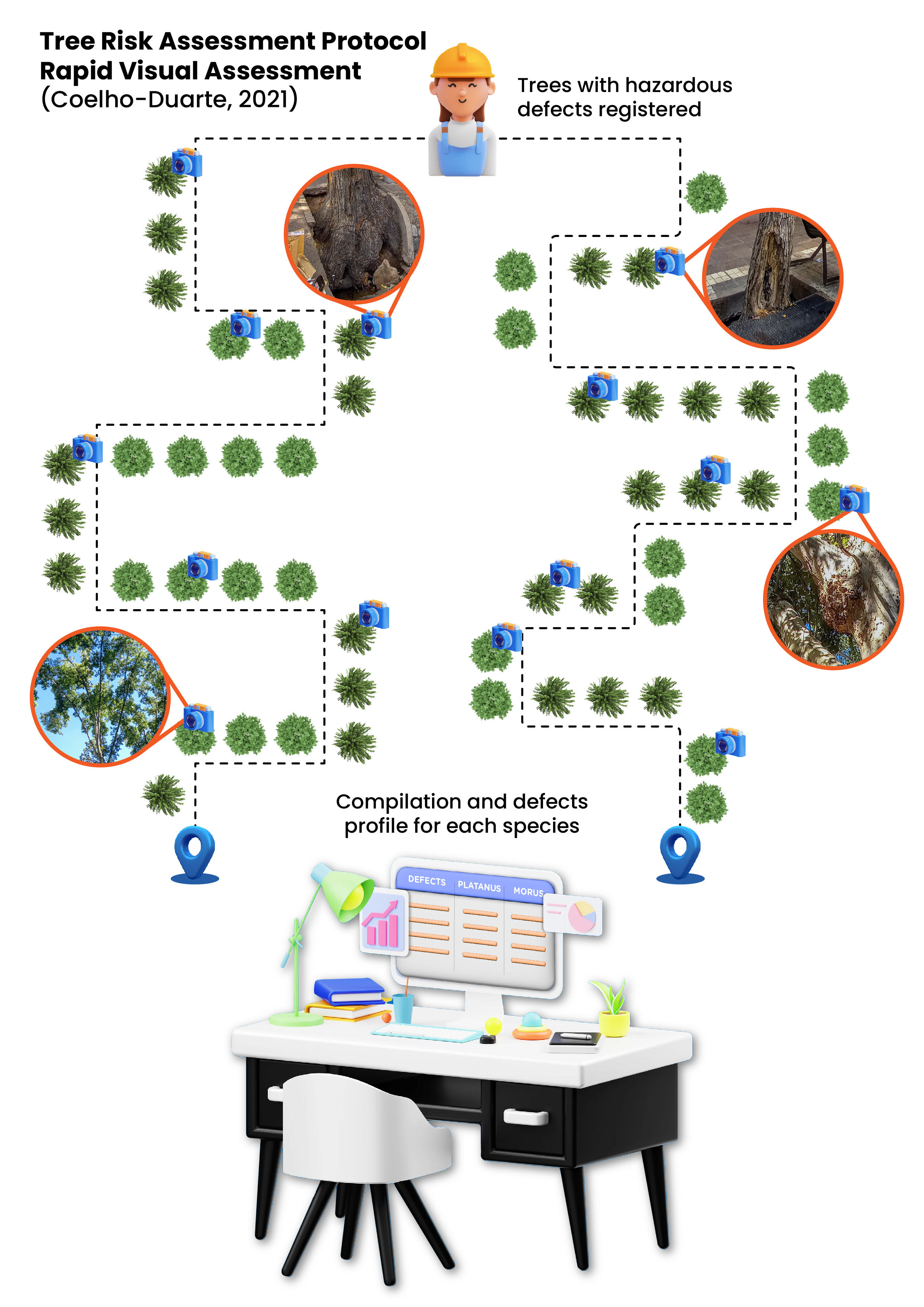Hazard indicators in urban trees. Case studies on Platanus x hispanica Mill. ex Münchh and Morus alba L. in Mendoza city-Argentina
Hazard indicators in Mendoza's Urban Trees
DOI:
https://doi.org/10.48162/rev.39.117Keywords:
Platanus hispanica, Morus alba, risk assessment, urban forest, urban tree managementAbstract

Urban forests significantly benefit cities and people´s wellbeing. However, under suboptimal growth conditions, they can pose risks. The tree risk and tree hazard assessments in public spaces bring together several protocols for preventing damage to people and property. This article aims to strengthen the database on forest resources at the urban scale and to identify key characteristics of relevant species of street trees in Mendoza-Argentina. In terms of methodology, trees of Platanus hispanica (London Plane tree) and Morus alba (Mulberry tree) were evaluated in situ by indicators related to the probability of failure such as defects, injuries and stress signals. The results show deterioration of part of the urban forest, as well as the greater resilience of P. hispanica when compared to M. alba. We conclude that systematically implementing these assessments will provide guidelines for the sustainable management of urban trees, improving forest infrastructure under sustainable development guidelines.
Highlights :
- Trees growing in cities are conditioned by certain variables compromising their performance.
- Risk assessment of urban trees considers several measurement protocols, including the rapid visual method.
- The main problems identified in P. hispanica were cankers with decay, combined with poor branch architecture.
- M. alba showed more hazardous defects, with an "imminent" likelihood of failure and presence of cankers combined with decay.
Downloads

Published
How to Cite
Issue
Section
License
Copyright (c) 2023 Revista de la Facultad de Ciencias Agrarias UNCuyo

This work is licensed under a Creative Commons Attribution-NonCommercial-ShareAlike 3.0 Unported License.
Aquellos autores/as que tengan publicaciones con esta revista, aceptan las Políticas Editoriales.










.jpg)




